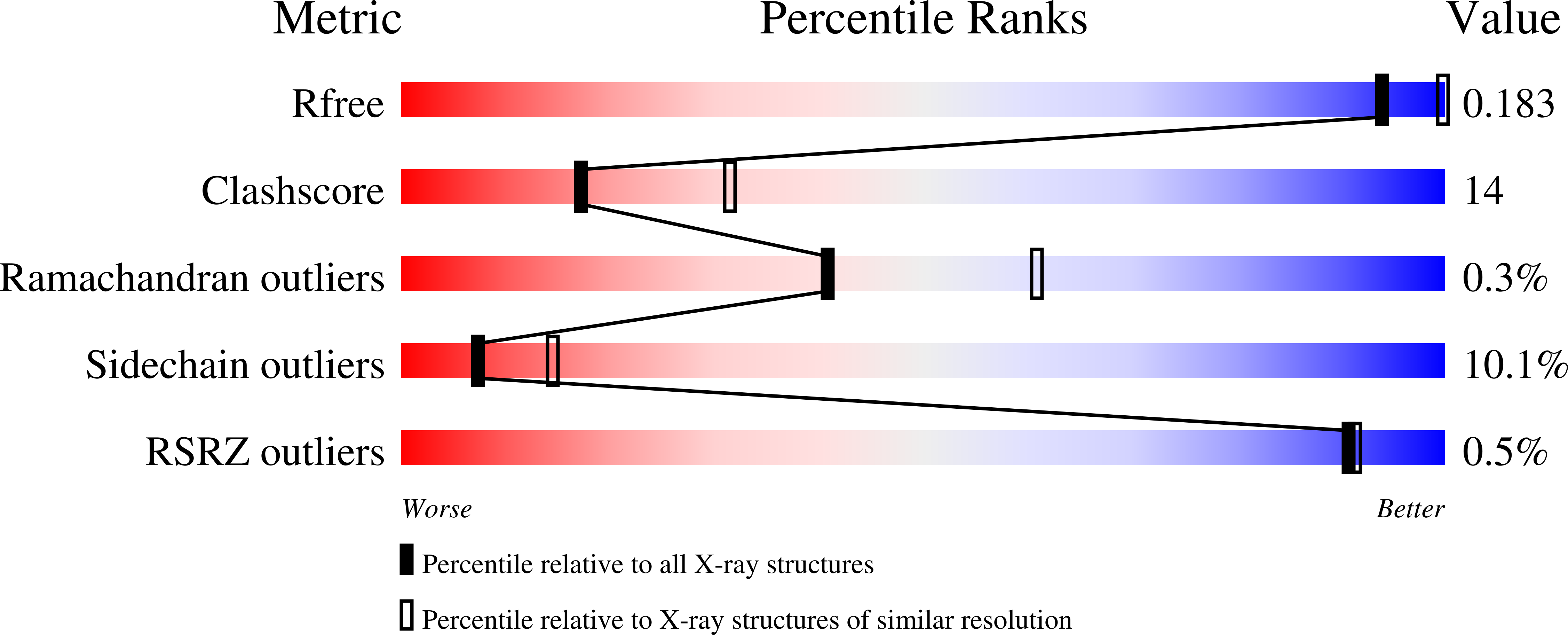Structural insights into enzyme regulation for inositol 1,4,5-trisphosphate 3-kinase B
Chamberlain, P.P., Sandberg, M.L., Sauer, K., Cooke, M.P., Lesley, S.A., Spraggon, G.(2005) Biochemistry 44: 14486-14493
- PubMed: 16262249
- DOI: https://doi.org/10.1021/bi051256q
- Primary Citation of Related Structures:
2AQX - PubMed Abstract:
D-Myoinositol 1,4,5-trisphophate 3-kinases (IP(3)-3Ks) play important roles in metazoan cellular signaling. It has been demonstrated that mice without a functional version of IP(3)-3K isoform B are deficient in peripheral T-cells, indicating that IP(3)-3KB is essential to the developing immune system. The recent apo IP(3)-3KA structure exhibited a helix at the catalytic domain N-terminus exhibited a helix at the N-terminus of the catalytic domain, with a tryptophan indole moiety mimicking the binding mode of the substrate ATP purine ring, suggesting a mechanism of autoinhibition. Here we present the structure of the complete catalytic domain of IP(3)-3KB, including the CaM binding domain in complex with Mg(2+) and ATP. The crystal structure reveals a homodimeric arrangement of IP(3)-3KB catalytic domains, mediated via an intermolecular antiparallel beta-sheet formed from part of the CaM binding region. Residues from the putative autoinhibitory helix are rearranged into a loop configuration, with extensive interactions with the bound ATP. Mutagenesis of residues from this region reveals that substitution of the putative autoinhibitory tryptophan generates a hyperactive enzyme which retains Ca(2+)/CaM sensitivity. The IP(3)-3KB structure suggests a mechanism of enzyme activation, and raises the possibility that an interaction between IP(3)-3KB molecules may occur as part of the catalytic or regulatory cycle.
Organizational Affiliation:
Genomics Institute of the Novartis Research Foundation, 10675 John Jay Hopkins Drive, San Diego, California 92121, USA.


















